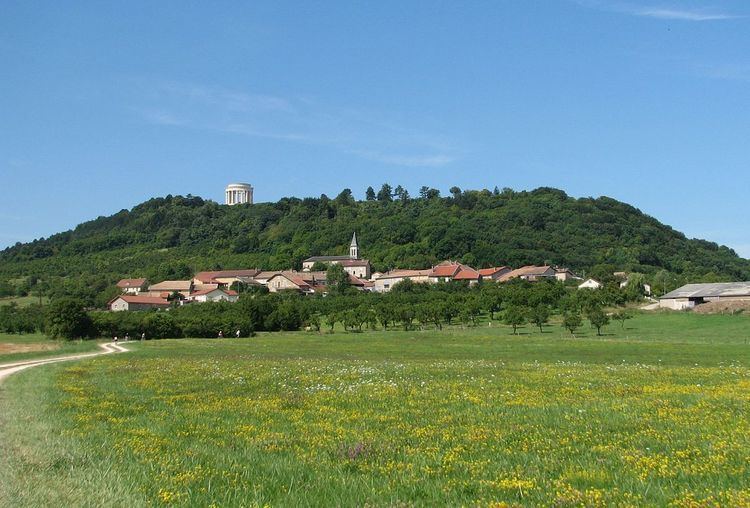Country France Population (1999) 68 Area 5.95 km² | Elevation 370 m Local time Saturday 8:33 AM | |
 | ||
Weather 6°C, Wind SW at 31 km/h, 94% Humidity Points of interest Butte de montsec, Lac de Madine, Montsec | ||
Montsec is a commune in the Meuse department in Grand Est in north-eastern France. Fighting in World War I and World War II took place in and around Montsec. The Montsec American Monument was built here during the 1930s by the American Battle Monuments Commission. The monument, dedicated in 1937, commemorates the American forces who fought in the Battle of Saint-Mihiel in World War I.
Contents
Map of 55300 Montsec, France
History
During The Great War, also known as World War I, the village was occupied by the Germans in 1914 during the Battle of Flirey. A hill, sharing the same name, commands a view of the Woëvre Plain, and was used by German forces as an strong point and for observation.
During the Battle of Saint-Mihiel in 1918, 1st Division attacked in the area of Montsec, bypassing it. The 1st Division was joined by the 26th Division, attacking on the other side of Montsec, also bypassing it. Both the 1st and 26th Divisions were able to accomplish it by a smoke screen being placed on the hill.
Having been bypassed due to it being fortified, being cut off from the rest of the German line, it fell to the Allies. This was accomplished by forces of the French 2nd Colonial Corps.
Before the Battle of Nancy, the commune was liberated by the American 317th Infantry in 1944.
Montsec American Monument
The monument was designed by Egerton Swartwout, and has been described as a doric temple. It was built during the 1930s by the American Battle Monuments Commission; it was dedicated in 1937. The monument commemorates American forces involved in the Battle of Saint-Mihiel. These included the First and Second armies.
During World War II, German forces occupying France left the monument untouched. As American forces advanced, and began to displace the Germans, the memorial was damaged by American artillery. The monument was later restored.
It has been described as being similar to the Jefferson Memorial.
